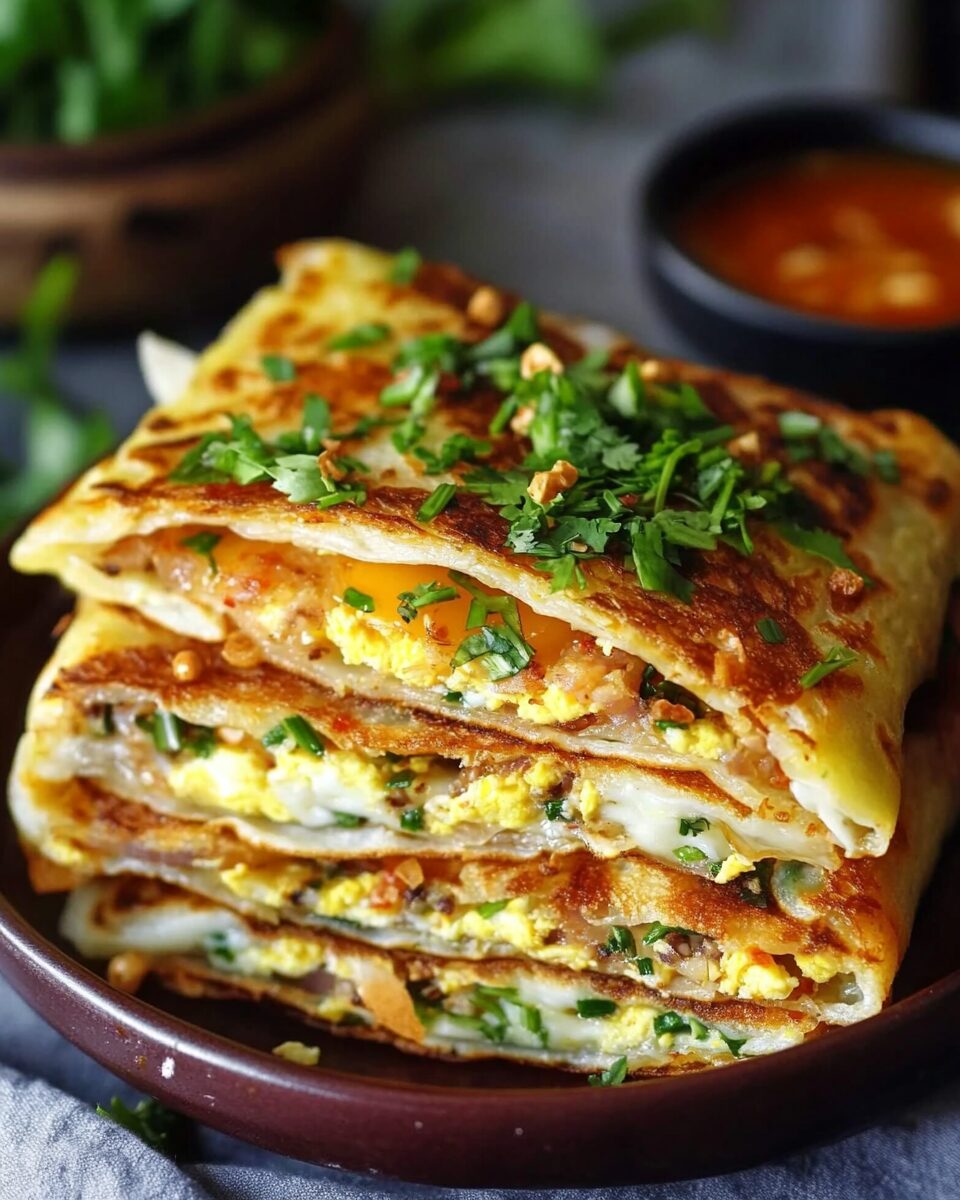Jian Bing is one of China’s most beloved street breakfasts—a thin, crispy crepe layered with egg, savory sauces, fresh herbs, and crunchy bits, then folded into a handheld delight. Originally from northern China, this dish has spread throughout the country (and the world) thanks to its irresistible combination of textures and flavors. Red House Spice provides an approachable at-home recipe with practical tips, making this street food classic achievable in your own kitchen.
Full Recipe:
Ingredients
For the Batter:
-
1/2 cup all-purpose flour
-
1/4 cup whole wheat flour
-
1/4 cup mung bean flour (or substitute with more all-purpose)
-
1 1/4 cups water
Fillings & Toppings:
-
Eggs (1 per crepe)
-
Chopped scallions
-
Fresh cilantro
-
Crispy wonton wrappers (or Chinese fried dough/crispy crackers)
-
Sweet bean sauce (or hoisin sauce)
-
Fermented chili bean paste (doubanjiang or substitute)
-
Lettuce leaves (optional, for freshness and crunch)
Directions
1. Prepare the Batter:
Whisk together all flours with water until smooth. Let it rest for 10–15 minutes to hydrate the flour.
2. Heat a Pan:
Preheat a non-stick skillet or crepe pan over medium heat. Lightly oil the surface.
3. Cook the Crepe Base:
Pour in a ladle of batter and quickly swirl or spread it into a thin, even circle.
4. Add the Egg:
Immediately crack and spread an egg over the crepe. Let it cook until the egg is set.
5. Flip & Fill:
Flip the crepe so the egg side is down. Spread sweet bean and chili sauces. Sprinkle scallions, cilantro, and lay crispy pieces and lettuce on top.
6. Fold & Serve:
Fold the crepe into a square or roll it up. Serve immediately while hot and crispy.
Nutrients (Approximate per Jian Bing – varies by filling choices)
-
Calories: 250–350
-
Protein: 8–12g
-
Fat: 10–15g
-
Carbohydrates: 30–40g
-
Fiber: 2–4g
-
Sodium: Moderate to high (depending on sauces used)

